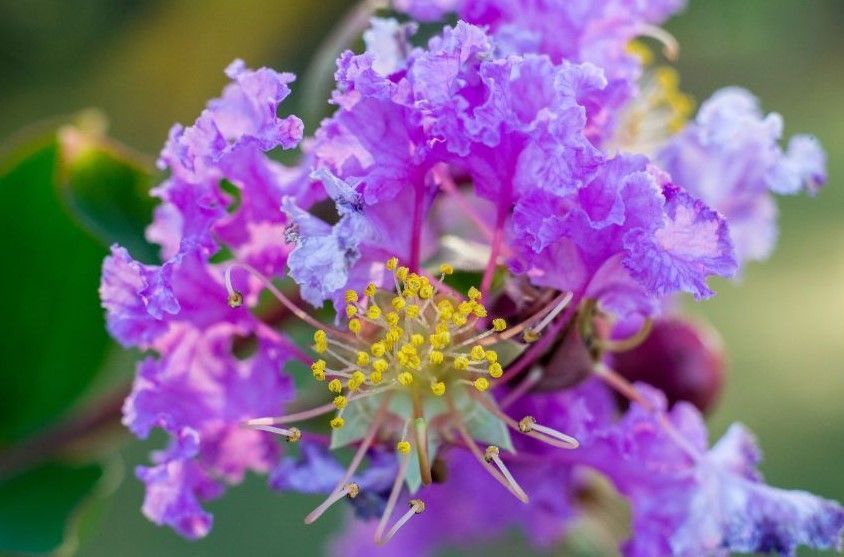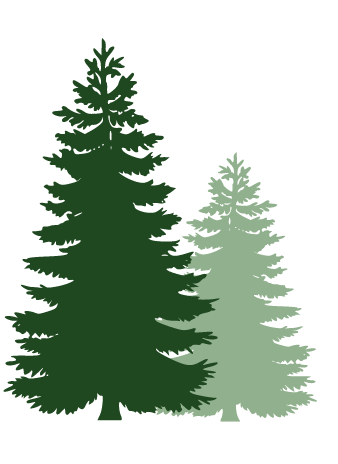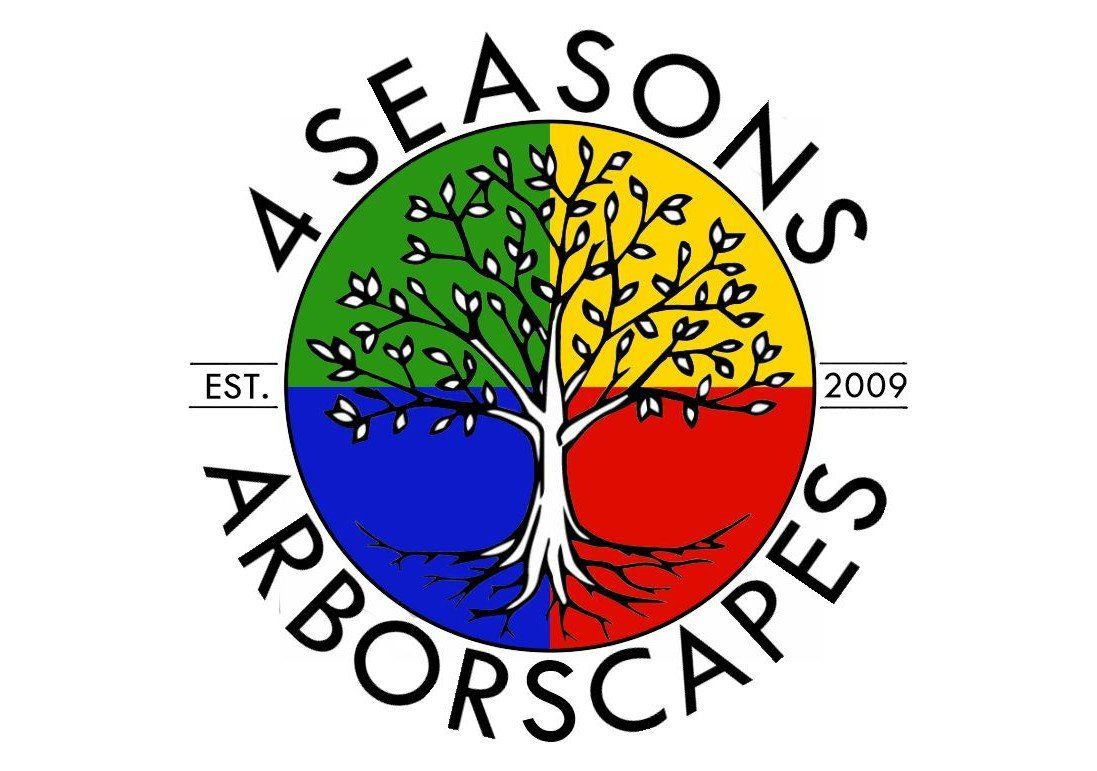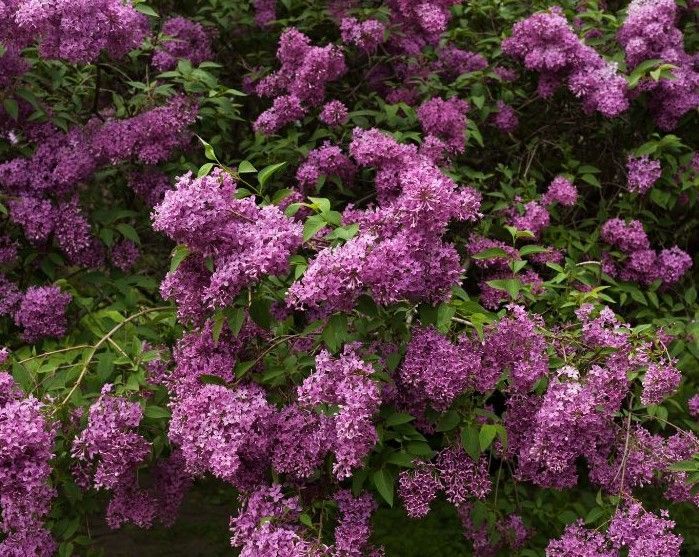A Guide to Crape Myrtles
So... what exactly is a crape myrtle?
The crape (or crepe) myrtle is a stunning summer-flowering tree and shrub that belongs to the Lagerstroemia genus. This remarkable genus comprises approximately 50 different species and a variety of cultivars that thrive in warmer climates. It is highly sought after for its exquisite, long-lasting blooms that come in a vast array of colors. This beloved plant is renowned for its remarkably low maintenance requirements, making it a favorite among gardening enthusiasts. Its popularity in the southern regions is well-deserved, as it brings an unparalleled beauty to any landscape.
What does a crape myrtle look like?
The crape myrtle is a visually stunning plant that is primarily cultivated for its magnificent flowers. These flowers come in a wide range of captivating colors, from pure white to delicate lilac, vibrant pink to rich purple, and fiery red to every shade in between. This vibrant display never fails to leave onlookers in awe. But the crape myrtle's beauty doesn't stop there. Throughout the year, this remarkable plant continues to captivate with its ever-changing foliage. In the autumn, the leaves transform into a stunning array of yellow, orange, or red, adding a warm and vibrant glow to any surroundings. Even during the bare winter months, the crape myrtle remains visually appealing, as its bark reveals a captivating tapestry of colors, providing texture and interest to the landscape.

How big can a crape myrtle get?
The size of this plant is categorized into 4 classifications: dwarf, semi-dwarf, medium, and tall, depending on the cultivar. The height can range between 10 and 30 feet, and the width can range between 15 to 25 feet. Older specimens can reach up to 40 feet at maturity.
How fast do crape myrtles grow?
Crape myrtles grow at a moderate to fast rate. You can expect an increase in height of 1 to 3 feet per year.
How long to crape myrtles live?
Crape myrtles have the potential to bring beauty and charm to your outdoor space for up to 50 years. By following proper care and maintenance practices such as regular watering, annual pruning, fertilization, pest and disease control, and providing them with suitable growing conditions, you can ensure that these magnificent trees thrive and continue to enchant for decades to come.
How long do crape myrtles bloom? When do crape myrtle bloom?
All crape myrtle trees, bushes, and shrubs produce blooms throughout the summer. Some species of crape myrtle begin flowering as early as spring or the start of summer. Depending on the variety, you can expect crape myrtles to bloom for as little as 90 days and up to 120 days. Their long blooming period means many trees still have flowers in late fall or before the first frost.
What zones do crape myrtles thrive in?
All crape myrtles are sun lovers and therefore do best in warmer regions. They are generally cold hardy in zones 7 through 10, although there are some cultivars that will survive in zone 6 as well. They are extremely heat-tolerant and quite drought-tolerant once established.
Don't live in a climate suited for these highly sought-after plants? Have no fear! Debby and Mark Wolfe, writers for HGTV wrote, "as time goes by and newer, more cold-hardy varieties become available, [crape myrtles] will continue to spread into cooler zones".
How to care for a crape myrtle?
Planting
The ideal planting season is in either fall or early spring. These trees should be positioned in an area that receives full sun exposure and good air circulation. The hole in which the plant is placed should be as deep as the root ball is tall, and about 2 times as wide to allow for root expansion. Crape myrtles can adapt well to more confined spaces, such as areas close to sidewalks or parking lots, and can provide shade in deck and patio areas. Please note: crape myrtles planted in partial or full shade will have reduced flowering and increased disease susceptibility.
The plant will tolerate any type of soil – sandy, clay or loamy. The soil should be amended with material that aide in drainage and moisture retention to promote healthy root growth. However, they prefer slightly alkaline to acidic (5.5 to 7.5 pH). If the soil is too alkaline, the foliage may turn yellow. Although it tolerates drought, it requires regular irrigation for approximately 2 years until it is well-established. Plants located in confined areas will need more frequent waterings than plants in open areas.
Watering
Crape myrtles are extremely heat- and drought-tolerant when established. As I mentioned above, young, unestablished plants will need to be irrigated more often than a well-established plant. Mature or established plants may need occasional watering during especially dry spells to prevent unnecessary stress.
Feeding
Fertilize in the spring and summer with a complete shrub fertilizer. Using a fertilizer heavy in nitrogen may cause the plants to flower less and produce shoot and leaf growth that may be subject to winter injury.
Pruning
Pruning should be done in late winter, before the buds begin to form. According to the HGIC of clemson.edu, "pruning is most important during the early years of a crape myrtle's life to create the [desired shape]. Remove branches smaller than a pencil's thickness, then prune for good branch structure. Remember, crape myrtles are multi-stemmed shrubs. If you have or want to have a tree form you must remove lower branches and pinch suckers away to create or maintain that look".
Severe pruning of crape myrtles has become a common practice among homeowners and tree care professionals to maintain shrub size. This effectively ruins the natural look of the plant and creates gnarly scars that take away from its appearance. New cultivars are being made available all the time, and there are now several dwarf and semi-dwarf types that allow homeowners to easily maintain their desired size without marring the elegant effect of the plant.
What pests and problems are crape myrtles susceptible to?
The most common pests & fungi associated with crape myrtles include powdery mildew, aphids, sooty mold, Cercospora leaf spot, Japanese beetles, and bark scale. The best way to prevent these problems before they arise is to ensure you are planting in full sun and providing good air circulation. A professional pest control specialist may be required for heavy infestations or larger specimen trees.
You can find more in-depth information on the
crape myrtle diseases, diagnosis, prevention, treatment, and susceptible crape myrtles types here.
What are the different types of crepe myrtle?
How many types of crape myrtle trees?
A cultivar, which stands for cultivated variety, is a specific type of plant that has been intentionally bred by humans to possess certain desirable traits. These traits can include characteristics such as color, size, shape, or disease resistance. In the case of crape myrtle, there are literally hundreds of different cultivars available, each with its own unique combination of features.
Given the vast number of crape myrtle cultivars, it is simply impractical for me to provide an exhaustive list of all of them in this particular space. However, I can certainly offer you a more comprehensive compilation of the various types of crape myrtle that are commonly found. This expanded selection encompasses an extensive array of cultivars, ensuring that you will have a much wider range of choices to consider when selecting the perfect crape myrtle for your garden or landscaping project.
Large (20+ feet)
- Natchez - white
- Tuscarora - coral pink
- Muskogee - light lavender
- Arapaho - red
- Byers Hady Lavender - lavender
- Choctaw - pink
- Twilight - dark purple
- Watermelon Red - red
- Wichita - lavender
Medium (12 - 20 feet)
- Sioux - dark pink
- Catawba - purple
- Dynamite - red
- Black Diamond series - varies from red, pink, lavender, magenta, purple, and white
Small (5 - 12 feet)
- Acoma - white
- Tonto - fuchsia
- Zuni - medium lavender
- Hopi - pink
- New Snow - white
- Okmulgee dark red
- Purple Cow - deep purple
- Red Rooster - rich red
Dwarf (< 5 feet)
- Chickasaw - lavender pink
- Centennial - bright lavender
- Mardi Gras - purple
- Bourbon Street - red
- Petite 'Mon' series - varies from red, pink, purple, and white
- Pixie White - white
- Pokomoke - deep pink
- Purple Queen - purple
References:
Crape Myrtle | Home & Garden Information Center (clemson.edu)
Crape Myrtle: How to Choose, Prune and Care for Crape Myrtles | HGTV
Crape Myrtle Diseases & Insect Pests | Home & Garden Information Center (clemson.edu)
Complete Guide to Crape Myrtles | Origin, Care, History & More (thetreecenter.com)
Crape Myrtle: Care and Plant Growing Guide (With Pictures) (leafyplace.com)
Crape Myrtle Care Guide - How to Properly Care for Crape Myrtles | Garden Analyst
A Complete List of Crape Myrtle Varieties - Crape Myrtle Trails of McKinney
Check out the latest...








